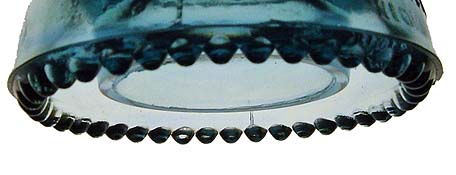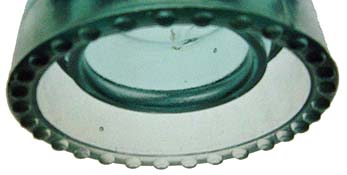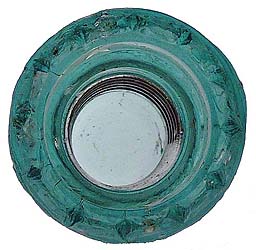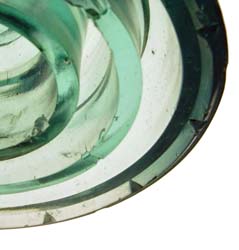
Threaded Glass Insulators
From North America
| 100-125 | 126-144 | 145-183 | 185-205 | 206-249 | 250-275 | 280-289 | 290-309 | 315-333 |
 |
Threaded Glass InsulatorsFrom North America |
Note: Click on each insulator for larger pictures and more information!
North American threaded glass pintype insulators are the most commonly collected type of insulator. There is a tremendous amount of information available both in print and on the web for the collector. Provided here will be just some example insulator pictures along with their associated CD's. This is a small subset of what information is available, anyone interested is strongly encouraged to get the following books which will provide much more detail and information:
The CD (Consolidated Design) numbering system was developed by N. R. Woodward for threaded glass pintype insulators and is used on this site with his permission.
Notes on the CD Numbering System:
When identifying insulators it is important to realize that there are altered insulators. Here is a link to information on fake and altered insulators.
Fake and altered insulator information.
Base style identification is important to differentiate between different insulator makers and ages. Most insulators that do not have drip points are simply identified as Smooth Base (SB), but there are a few special exceptions as follows:

Rounded Base - Found on later Brookfield styles and some early Canadian styles. (Also known as mold line over base) |

Rounded Base - Closeup of mold line over base |

Continuous drip (Attribute found on some Pennycuick insulators) |

corrugated base (Found on more recent styles) |
On May 2, 1893 Hemingray patented the drip point which was designed to provide water droplets a place to form and thus more quickly drip off the insulator. Although history has shown this to have been largely ineffective, it was successfully marketed and once the patent expired many companies made insulators with drip points.

Sharp Drip Points (SDP) |

Round Drip Points (RDP) |

Flat Drip Points (FDP) -- Distinctly flat base on the drips, found on McLaughlin and Maydwell products. |
|

Wedge Drip Points (Found only on CD 102 & 162.3 Star and CD 284 FLOY insulators). Possibly an attempt to work around the Hemingray patent. |

Wedge Drip Points (WDP) on the CD 284 FLOY |
| 100-125 | 126-144 | 145-183 | 185-205 | 206-249 | 250-275 | 280-289 | 290-309 | 315-333 |
 Return to the insulator identification page
Return to the insulator identification page